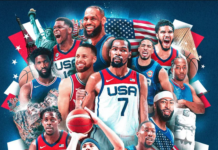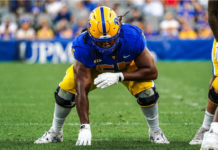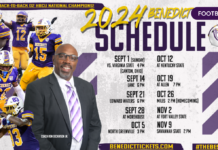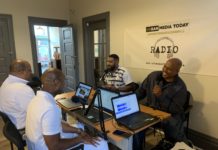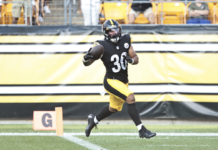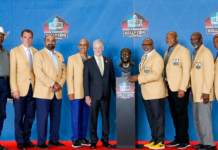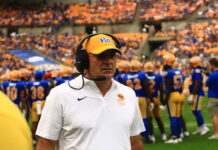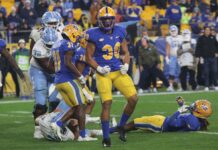
Technology is sweeping into every corner of industry, and sports are no exception. Scientist, doctors, and engineers are constantly creating technology and methods to limit injury and or injury timespan.
According to Industry Tap, a technology and engineering based online news service, “At a rapid rate, sports teams are using technology and emerging methods to improve injury prevention and recovery. In the global sports medicine market, which is anticipated to grow to $8.3 billion by 2019.”
In sports, injury is inevitable, on average there are, “12,500 injuries per year,” and “that number has been relatively consistent over the years,” says the Live Strong Foundation for healthy lifestyles. Therefore, the goal is not to rid sports of injuries, but rid it of long-term injury.
At Pac-12 powerhouse Washington State, the football program has invested in the latest technology to help train and care for athletes. For instance, hamstring injuries are common in athletes, WSU, has technology in place to increase the turn around speed on hamstring injuries. Greg Hoyd, a junior defensive linemen at Washington State, experienced, what seemed to be major, hamstring injury, however technology at WSU sped up his recovery, “I had a hamstring injury a year ago, and I was playing again in like a week, that’s usually a four week injury. They used the underwater treadmill, and hamstring lamp,” he said over a phone interview. Former 2007, college track and field runner, Jeff Sejour, experienced a hamstring injury in his career, “for a hamstring to feel a hundred percent when I was playing, it would take at least six weeks,” he said.
WSU also addressed concussions in football, senior cornerback Treshon Broughton says, “Washington state uses technology to help make the football players helmets as safe as possible. They use the helmet test to see how much impact a football player receives from a helmet-to-helmet hit. This helps players stay healthy so they can make the best out of each game of the season.”
Melvin Lewis, former starting Defensive End for Kentucky, and NFL prospect, suffered a knee injury in his career that was treated by Kentucky with Hydroworx Pool technology. “New tech they use is a hydroworx pool. This pool is used for any injury that hinders you from walking and running. Machines such as the pool make recovering from injury twice as fast as previous decades. The Hydroworx is a pool with a treadmill in it, and cameras for team doctors to watch your ankles/knees to see if they are moving fluently, and make adjustments if they aren’t,” Lewis said.
Notre Dame provides the latest in treatment and drill technology to their athletes. Standout Notre Dame wide receiver, Equanemious St. Brown, says that trainers often use, “laser treatment,” to treat injury, referring to low-level laser therapy, which is a fairly new study that. It “is a treatment that utilizes specific wavelengths of light to interact with tissue and is thought to help accelerate the healing process. It can be used on patients who suffer from a variety of acute and chronic conditions in order to help eliminate pain, swelling, reduce spasms and increase functionality,” says Spine-Health, a online medical professionals ran back and neck health forum.
Also at Notre Dame, they utilize, “Dummies that are controlled by a remote, similar to an RC car,” Brown said. The Dummies Brown is referring to, are tackling dummies; their official name is Mobile Virtual Player. They are used for in practice tackling drills, these dummies “ allow you to tackle without making contact with another person, which is less stressful on the body,” according to Dartmouth University, defensive line coach, Duane Brooks. Dartmouth University graduate students created the Mobile Virtual Player, and head coach Buddy Teevens, within Dartmouth’s engineering program.
Since the creation of the Mobile Virtual Player, five plus years ago, it has taken off within the football world. “Notre Dame purchased four, and we have the Packers, Panthers, Cardinals, Steelers, Lions, and more. We have over 100 sold now,” Teevens said. The success of the, MVP, can be credited to Dartmouth football only having “1 defensive concussion in 2 seasons,” Teevens says. Dartmouth’s injury rate in totality, “dropped 80%,” since they implemented the MVP.
While college football continues to gains from new technology, the NFL has been at the forefront of scientific body rehabilitation methods for a number of years, reaching beyond the implementation of the MVP machines. Cato June, former Super Bowl winning safety, whose career finished in 2010, found the NFL’s investment in Arpwave stem machines the most beneficial to his recovery.
“There was this thing called the Arp, which was essentially a super powerful stem machine. You would have these electronic waves running through whatever ailing part there was on your body, and you would work that muscle while the Arp was basically shooting electricity into that area making the blood, and fluid that is causing your tension to dissipate,” June said.
The human body is constantly being tested via sports and science and technology are constantly looking for ways to better prepare for and combat the effects of those test.
By: Tiffany Hoyd














